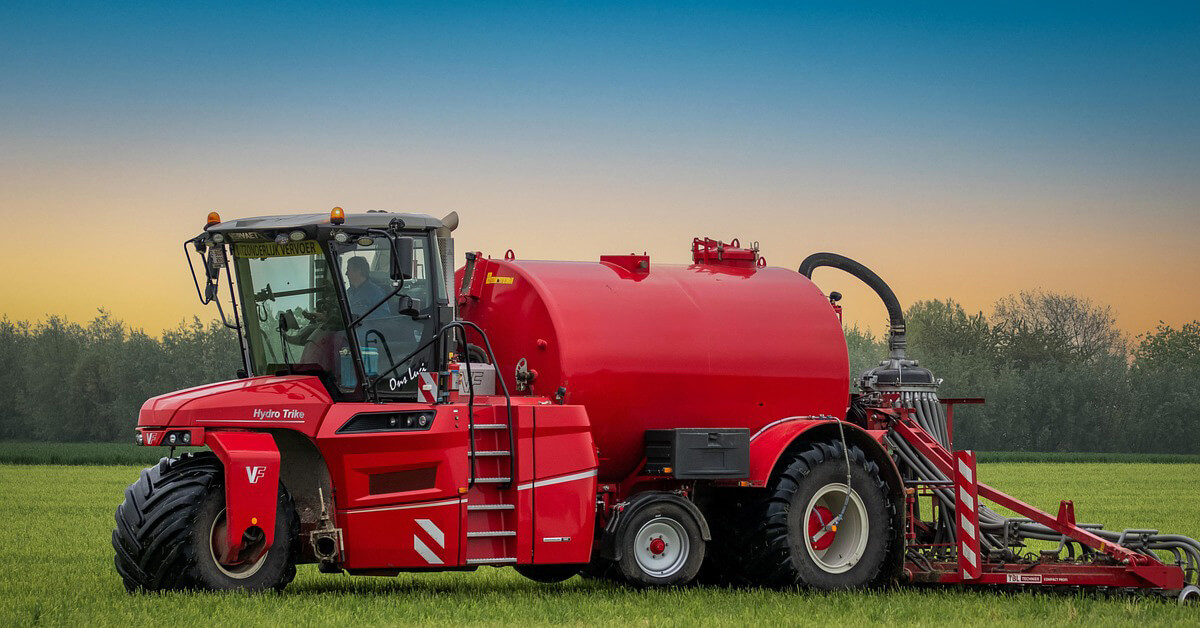Allis-Chalmers was a major U.S. machinery manufacturer serving diverse industries, including agriculture, construction, power generation, and industrial machinery for facilities like mills and mines.
Formed in 1901 through a merger of several companies and reorganized in 1912, it became renowned globally for its industrial equipment and, notably, for its popular orange farm tractors and silver combine harvesters.
However, the company underwent a series of divestitures in the 1980s and 1990s, ultimately leading to its dissolution, with its legacy carried on by successors Allis-Chalmers Energy and AGCO.
One of the most interesting of these industrial giants was the Allis-Chalmers Company of West Allis, Wisconsin.
This great company was a pioneer of the American and global industrial age.
Allis-Chalmers built the engines that powered our factories: by 1900, they may have been the world’s largest manufacturer of steam engines.
Over time, they expanded into almost every type of engine and machine, using the slogan “our four great power sources: steam, gas, water, and electricity.”
The company produced everything from giant turbines for small power plants to the more familiar orange farm tractors they are known for.
Allis-Chalmers continued to invent and innovate in these fields.
Throughout the first half of the 20th century, they remained one of the 100 largest manufacturing companies in the United States.
By the early 1950s, Allis-Chalmers employed over 30,000 people, and its annual revenue exceeded the combined total of IBM… (company), as well as those of 3M and Coca-Cola.
However, by the late 1980s, Allis-Chalmers had sold off its major business divisions and finally dissolved in 1999.
Here is a brief look at the history of this once-great company, with particular focus on its farm tractor business.
The origins of Allis-Chalmers trace back to Edward P. Allis. In 1846, he started a leather tanning business with a college roommate in Milwaukee.
Ten years later, Allis decided to sell his share, just before the Panic of 1857 (an economic downturn).
He weathered that financial crisis and in 1861 bought Reliance Works at a bankruptcy auction – a struggling flour mill and sawmill manufacturer.
Reliance Works’ workforce dropped from forty to twenty employees, but Allis saw the potential in its factory and machinery.
During the Civil War, the company’s profits rose. By the end of the war, Allis employed seventy-five workers.
By 1871, Milwaukee’s city leaders needed a new water supply system, including a 21-million-gallon reservoir, pumping stations, and miles of pipe.
Allis’s Reliance Works secured the pipe contract, valued at 2,600 tons of iron pipe.
To fulfill the order, Allis built a $100,000 pipe foundry – the city’s first of its kind. This financial burden led the company to bankruptcy during the Panic of 1873, but Allis persevered.
While the provided text touches on the broader company history, it doesn’t delve deeply into the specific development milestones of the Allis-Chalmers farm tractor itself, such as key models or technological innovations unique to their tractors during their peak years.
It primarily sets the stage by establishing the company’s overall industrial importance and eventual decline.
Despite this, the text highlights the significant role Allis-Chalmers played in American industry and the lasting legacy of their products, including the iconic orange tractors still cherished by collectors today.
Their engines continue to power factories and power plants globally, a testament to their engineering legacy over the company’s 138-year history and the employment of tens of thousands of people.
Allis-Chalmers entered the post-World War II era of tractor manufacturing facing stiff competition from established leaders like International Harvester, John Deere, and Massey-Harris, and spent the next two decades striving to keep pace in the battles for horsepower and market share.
The company’s tractor lineage, however, traced back further, with roots in the late 19th century.
A significant early model was the Model U, introduced in 1929 in partnership with United Tractor Company as a response to Ford’s Fordson.
Popular enough to remain in production until 1952, it weighed 4,000 pounds and delivered up to 30 horsepower in later versions.
Notably, the Model U holds the distinction of being the first farm tractor factory-equipped with low-pressure rubber tires, a major advancement over rigid steel wheels.
The Model B, produced from 1937 to 1957, revolutionized farming for many small operators.
It was the first “modern” tractor available under $500, even with rubber tires, making it significantly more accessible than A-C’s$825 WC model.
This affordability, alongside similar offerings from competitors, played a crucial role in phasing out horse-powered farming.
By the 1950s, inflation and added features pushed the Model B’s price to $1,440, and over its lifespan, it sold around 120,000 units, slightly fewer than the more powerful WC’s 178,000 units (1933-48).
Not all A-C tractors followed the standard layout. The Model G, introduced in 1948, was a compact, uniquely designed machine with just over nine horsepower.
Its four-cylinder engine was mounted rearward, and a curved tubular frame allowed implements to be mounted directly in front of the operator.
This design provided unparalleled precision for cultivation and seeding tasks, as the operator could closely monitor implement placement.
Approximately 30,000 Model Gs were sold before production ended in 1955.
The WD succeeded the WC in 1948, bringing substantial improvements despite a similar appearance.
New features included two-clutch power control (allowing drive wheel stoppage while maintaining PTO power), a single hitch-point system, a traction booster, and power-shift rear wheels (adjustable for row width without jacking).
Weighing in at 24-30 horsepower and capable of pulling three plows, the WD was a hit, selling over 145,000 units during its six-year run.
By 1953, facing competitors with over 40 horsepower, Allis-Chalmers responded with the WD45, boasting 30-39 drawbar horsepower and moving into the four-plow class.
It featured the innovative “Snap-Coupler” hitch, allowing quicker implement attachment than the then-emerging three-point system.
The WD45 was also the first A-C tractor to offer diesel power and power steering. Sales were strong, exceeding 90,000 units (83,500 gas, 6,500 diesel) between 1953-57, surpassing John Deere’s Model 60.
However, it remained less powerful than contemporary top models from IH (48 HP) and John Deere (62 HP).
As the Model B neared its end, the Model CA (1950) filled the 20 HP gap, incorporating WD features like power-shift wheels and a two-clutch system.
The late 1950s saw the introduction of the first “D” series: the D14 (30 HP, 1957-60) and the D17 (46-49 HP, 1957-67, with multiple series updates).
These featured a new operator position ahead of the rear wheels, significantly reducing the “catapult” effect from bumps.
By the early 1960s, the D-Series offered over 50 configurations, including orchard and high-clearance variants.
Lower-end models like the D10 and D12 (both 24 HP initially, 1959-68) catered to smaller operations, with the D12 offering wider cultivation.
The D15 (1960) replaced the D14 with a more powerful engine and was the first in the line to adopt the now-standard three-point hitch.
The D19 (1961-64) reached 58-64 HP, pioneering the use of a factory-installed turbocharger on a diesel engine.
The D21 (1963-65) was a landmark, the first A-C tractor to exceed 100 PTO horsepower (103 HP).
It introduced direct-injection diesel, independent PTO, hydrostatic power steering, and a tilt wheel. The D21 Series II (1965) added a turbocharger for 116 drawbar HP.
In 1964, Allis-Chalmers launched its new “Hundred Series” with the One-Ninety, characterized by high horsepower, squared-off styling, and refined hitch systems like the Traction Booster Drawbar. It was also the first A-C tractor available with factory air conditioning (1965).
Variants included the diesel version (to 1973), the more powerful XT series (72-80 HP, 1965), and the smaller One-Seventy (47 HP, 1967) and One-Eighty (55 HP, 1967).
By 1969, recognizing shifts towards conservation tillage and self-propelled combines, Allis-Chalmers emphasized efficiency with the Two-Twenty Landhandler (117 HP), featuring a stronger transmission for faster pulling rather than just increased size.
By 1970, the company’s Persian Orange tractors were well-respected, seemingly poised for success.
However, economic challenges, particularly the recession of the 1980s, ultimately led to the company’s dissolution, with its agricultural equipment assets eventually becoming part of AGCO.






Leave A Comment